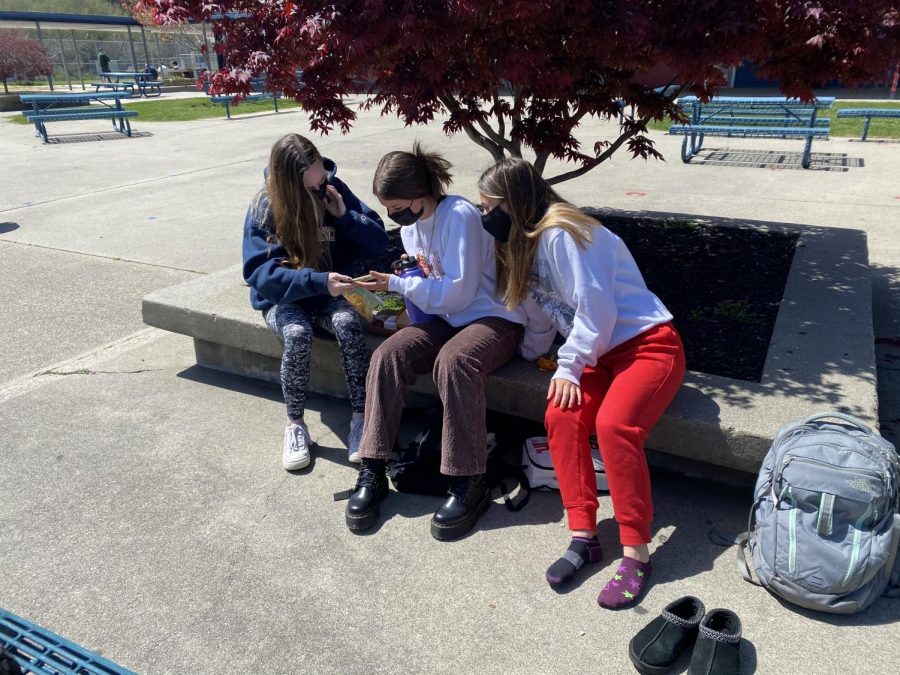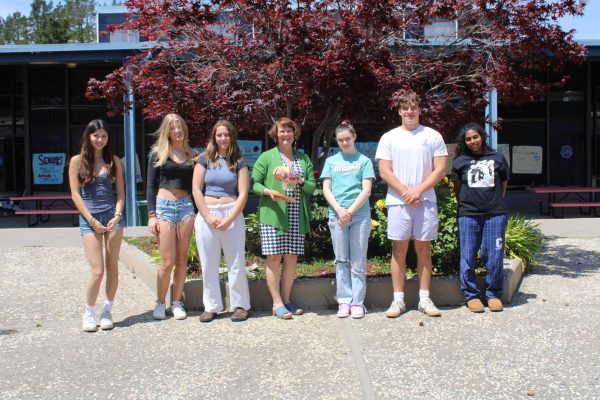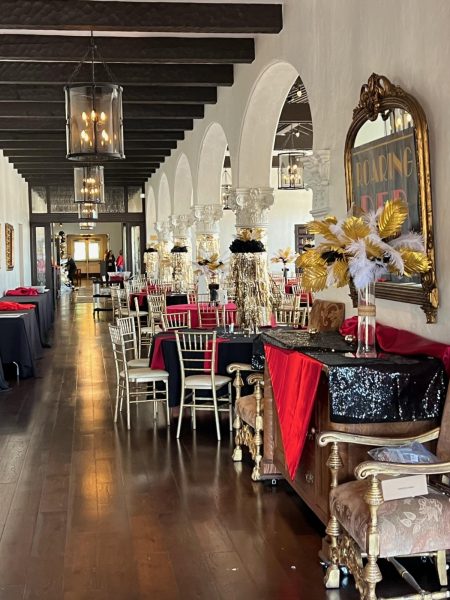Students Return to Campus After One Year of Distance Learning
After months of preparation and uncertainty, Campolindo students were finally welcomed back on campus with the commencement of hybrid learning on March 16.
Students prepared for the transition during the prior week of asynchronous learning, where they completed the “AUHSD Student Orientation to COVID-19” modules and arrived on campus in their assigned Academy Cohorts for staggered student-led tours.
“So far I would say [hybrid has] been going really really well,” said Associate Principal Laura Lee. “We’ve spent so many months actually preparing for hybrid so to see it actually happening has been really exciting.”
Changes made to accommodate Cohort A and B students include dividing the on-campus students between under and upperclassmen for an Academy-lunch rotation.
Lunch periods look different now, with changes including a quieter quad, more social distancing with lunch groups, and administrators and counselors patrolling the campus ensuring all students are safely following protocols.
“We’re just definitely trying to be super present on campus and making sure we remind everyone to wear masks, stay 6 feet apart,” said Lee. “But I would say really by and large students are doing a great job of wearing their masks and it’s everyone keeping their distance which is probably the challenge.”
In terms of learning, many students noticed a change from distance learning in the past.
“I think the more interactions [in hybrid], I feel more inclined to raise my hand during class,” said freshman Zarah Thomas. “…there are less distractions so I feel like I’m getting my work done faster.”
“It definitely seems more quiet so it’s easier to focus and there are less disruptions, so the actual learning I’m getting done is better…And there’s more individualized attention, like if you have a question it’s easier to ask it. But besides that it hasn’t been much different,” said senior Dylan Gunn.
Chemistry teacher Stephanie Verbanszky agreed, with more benefits including students’ “social-emotional wellbeing and academic learning.”
“Also…being in school is a better place for learning, like when you’re at school you’re ready to learn and you’re in your school seat…not in your bed or on your couch. I think it does allow you to be more alert,” added Gunn.
Despite all this, Verbanszky said that keeping both the online and in-person cohorts equally engaged has been a challenge. “I can’t lesson-plan for when we do the same thing in person each of the two days of the week, and then just flip it and have asynchronous work on the other days, because Cohort C kids can’t ever participate in person,” she said.
Additionally, the implantation of iPads in classrooms, which allow students in different cohorts to communicate without needing to be on Zoom, has had its fair share of complications.
“I think when we were trying to implement the iPads—which some teachers have been more successful than others with—figuring out the sound piece of that was really hard because if I were to use the iPad to collect sound and be the speaker I have a hard time hearing it. But if it’s collecting sound, and then the sound is coming out of the Extron, there’s bad feedback. The audio issues were the main problem,” said Verbanszky.
“I think by having people on Zoom, the teacher’s attention is split and it’s hard to hear the classroom on Zoom,” Thomas commented.
“Everything hasn’t been perfect, there’s been a few bumps in the road such as arrows going in the wrong direction,” said Lee. “We weren’t quite sure how Academy and lunch would shake out but the students and teachers have been doing a really great job managing those staggered lunch and academy times.”
Verbanszky said she has “hope that at some point more and more students will be able to come back in person, so that we can really do more without leaving the people behind who are in distance learning.”
Your donation will support the student journalists of Campolindo High School's The Claw. Your contribution will allow us to produce more issues and cover our annual website hosting costs.
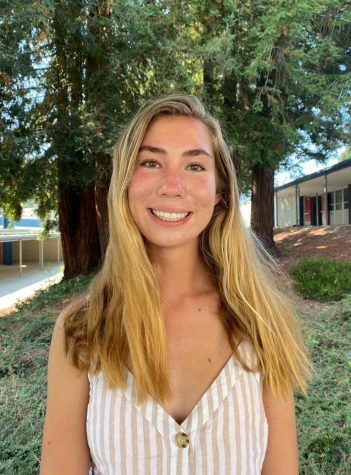
Senior Gracie Woidat has a passion for both working and caring for people and animals. She has found her calling by volunteering at the Lawrence Hall of...
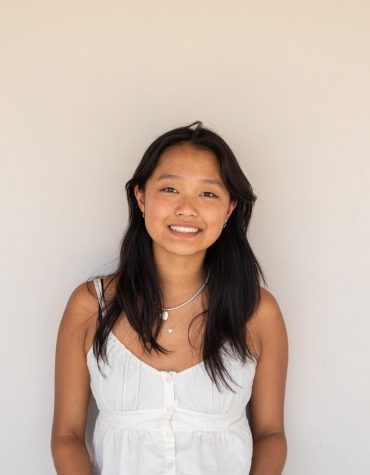
Senior Yasmine Chang spends her free time writing short stories and poetry, drawing on her love of reading and music.
Chang gains inspiration from these...
